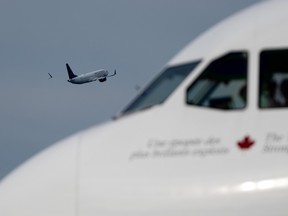Douglas Todd: Half of Canadians now believe “mass deportations” are necessary to stop unauthorized migration. What can be done about the many temporary residents not willing to leave?

Recommended Videos
He was admitting the Liberal government, after opening up migration volumes to extraordinary levels, took too long to slow down the recent rush of newcomers: three million in just three years.
And some of those new arrivals have been making their way across the U.S. border, much to the indignation of incoming president Donald Trump, who is threatening strong tariffs if Canada doesn’t clean up its border act.
More than a few Canadians believe the country’s housing, universal health care, refugee boards, job market and social services can’t handle the demographic stress. Trump is adding external political pressure since he won reelection.
Something’s got to be done in Canada, but Miller said he’s relying on people to leave voluntarily. Meanwhile, the number of people involved is staggering, bewildering.
The federal government won’t actually admit to that huge number, but it has acknowledged the visas of 500,000 temporary migrants have already ended. And they haven’t left the country.
Opposition leader Pierre Poilievre has gone on social media to say it’s outrageous the Liberals don’t know how many migrants remain in the country illegally.

Last spring, Miller committed to reducing the number of guest workers and foreign students in the country to 2.1 million.
But one of the many voices who say that’s still too many is economist Mike Moffatt, whom Prime Minister Justin Trudeau brought in last fall to provide his cabinet with a special migration update.
Taking into account that Canadians’ birthrate is not enough to replace those who die, Moffatt said it would still mean Canada would have a “pro-immigration approach.” That’s because the country would accept about 300,000 new permanent residents each year.
How did we get to this muddled state, where the government admits the numbers are out of control — and that it can’t even track, let alone control, the movement of hundreds of thousands, if not millions, of the country’s guest workers and foreign students?
The upshot was that proper exit controls would increase the likelihood officials catch homegrown terrorists, individuals who illicitly take advantage of taxpayer-funded health care and, particularly, people who overstay their visas.
The plan was to better track when people leave the country by land, sea or air — using techniques long in place in Australia, the U.S. and the European Union. But even though upgraded exit controls were instituted in 2019, they have not made an obvious difference in compelling people to follow the rules regarding how long they can stay in the country.

To add to the disorder, 2024 had a drastic rise in the volume of temporary residents — 130,000 — trying to overstay their work and study visas by applying for refugee status. That’s up from 10,000 less than a decade ago. The asylum claims process can take several years.
In response to questions from Postmedia, the CBSA said it does what it can to monitor and penalize people who overstay. Specifically, officials said that for various reasons it issued more than 3,700 “removal orders” in 2024, compared to 1,517 in 2020.
Sam Hyman, a retired Vancouver immigration lawyer, said Canada, unlike many countries, doesn’t have exit immigration controls that require all travellers who leave to be examined and their departure confirmed. But, he said, there is a certain degree of border-crossing monitoring.
Vancouver lawyer Richard Kurland, publisher of a monthly migration newsletter called Lexbase, says more rigorous entry and exit controls, while useful, won’t solve Canada’s border crisis alone.
He’s more concerned the government is trying a number of strategies to avoid taking blame for the migration turmoil, first by “denying” it, then by “distracting” from it and now by “repackaging” it, while making new promises.
After Trudeau spent years accusing critics of his high migration policies of being xenophobic or racist, Kurland said he and Miller last year “did a 180 (degree turn) and offered a mea culpa,” admitting to overshooting.
However, they then compounded their blundering, Kurland said, by promising temporary residents who overstay their visas a general amnesty.
“But when you have immigration amnesties, why obey rules, when all you have to do is to hide and wait for the next amnesty?” Kurland said. After the public rose up in criticism, Kurland said the Liberals had to pull back their scheme.
“We are left with the chicken in the python,” Kurland said, “which will be a ticking immigration time bomb for whoever replaces the Trudeau government.”